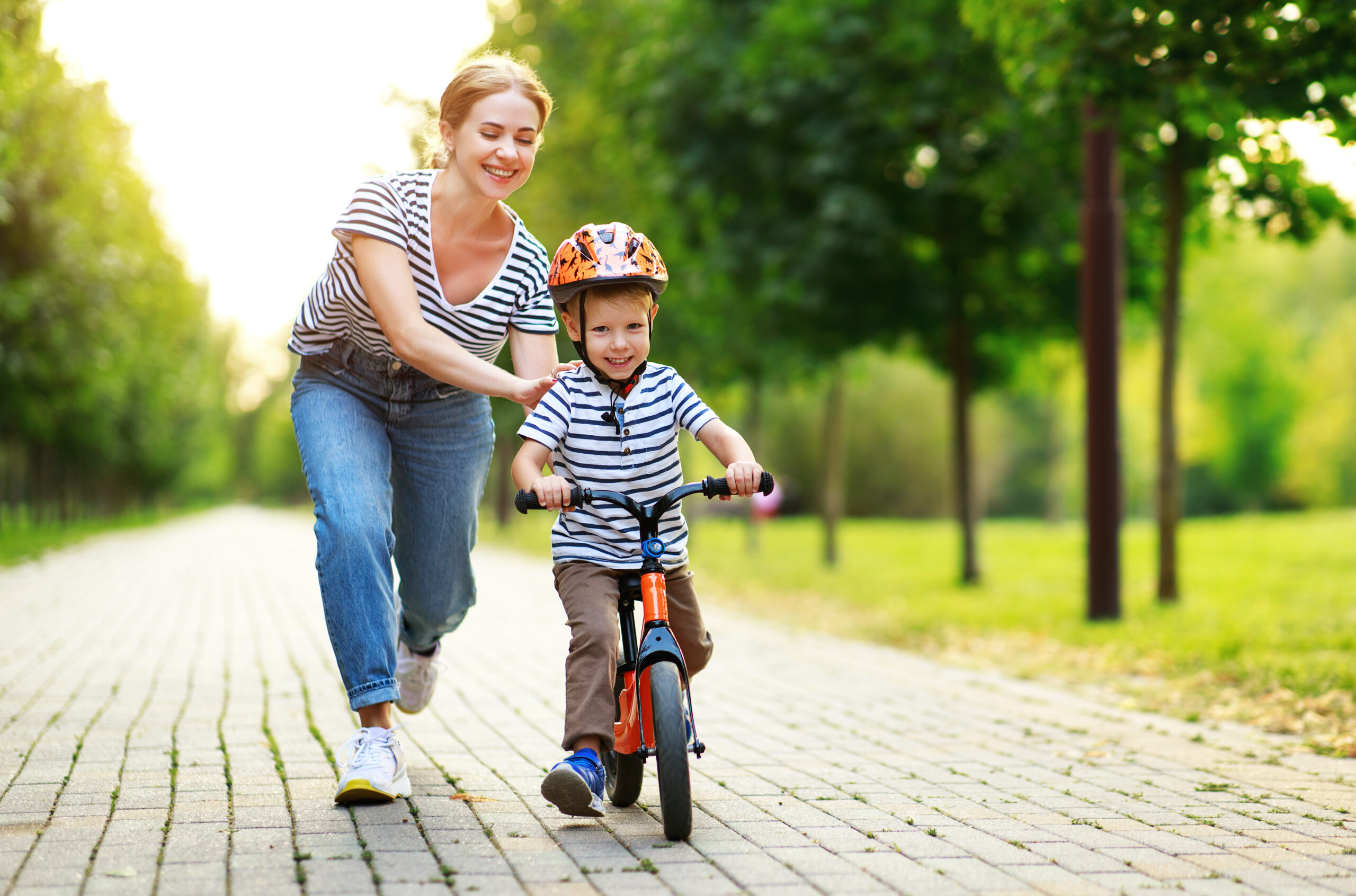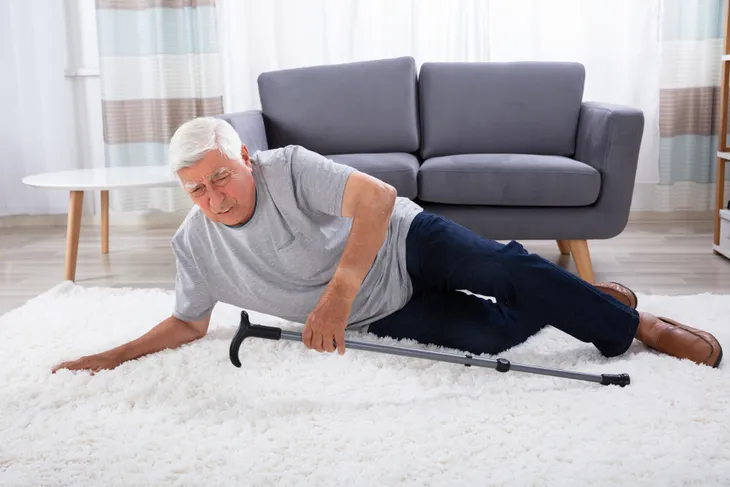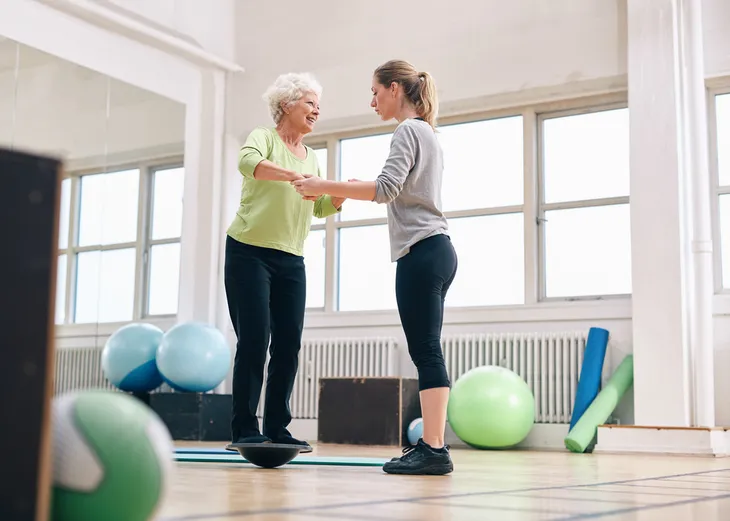No one is born with the ability to ride a skateboard, surf or even stand on their tiptoes. Unlike other mammals, human beings have no balance at birth – virtually no capacity to walk or even stand. Before that can happen, their vision, hearing, muscles, bones and brain must develop. This takes months, and for some activities, even years.
Infants typically begin rolling over when they’re 6 months old. They generally start to crawl by 9 months, and stand around a year old. By 18 months old, most can walk alone and go up steps. By age 2, toddlers can perform more complex tasks, such as kicking a ball. By 3 years old, most children run well and can walk up and down stairs with one foot on each stair. Some children reach these milestones faster, and some are slower, and that’s normal.
Balance is a skill
As you get older, you may notice that some people are really good at keeping their balance. They can dance well, jump rope and do somersaults. But they were not born with this ability. Instead, it took practice. Balance is a skill – the more you practice any skill, the better you become, though some people may be more naturally adept at it.
As a physical therapist for over 15 years, I’ve seen patients of all ages who struggle with balance, and I’ve learned that it takes three of the body’s systems working together to keep a person in good balance: the visual, somatosensory and vestibular systems.
The visual system includes the eyes, the optic nerves that connect the eyes to the brain, and the brain’s visual cortex. Babies are born nearsighted, able to see only about 10 to 12 inches away. As their visual system develops, their brain learns how to process visual information, so they get better at moving and balancing.
The somatosensory system registers sensations detected by the muscles, joints, skin and the body tissues that connect them, called the fascia. These perceptions of touch, pressure, pain, temperature, position, movement and vibration travel via pathways in the spinal cord, brain stem and thalamus – a small, egg-shaped structure in the middle of the human brain – where they are integrated and analyzed.
For example, when a baby tries to stand, their brain processes the feelings coming from their feet, legs and hands to help them balance.
The vestibular system, which is the body’s system of hearing as well as balance, consists of five distinct organs in the ear. Inside these organs there is fluid, which moves when the body and head move. As this fluid moves, it sends signals to the brain, which in turn makes a person aware of their position and helps them balance.
The central nervous system uses the information coming from these three systems and generates signals that are sent back to appropriate muscles in the body to help maintain good balance.
Healthy individuals rely roughly 70% on somatosensory information, 20% on vestibular system information and 10% on vision to maintain balance on firm surfaces.
Abnormality in any one of these three systems may result in balance problems. But when one system is affected, the other two can be trained to compensate.
Becoming unbalanced
There are many ways to lose one’s balance. Standing on slippery ice, the sensory receptors in the feet are unable to send appropriate signals to the brain quickly enough for the brain to activate muscles to maintain balance.
For many people, walking in the dark means risking a fall because the brain is receiving so little visual information about the environment. People with poor or no eyesight learn to rely more on the other two sensory systems to maintain balance.
When something knocks a person off balance, such as being bumped while walking or running, it can cause something called a “vestibulospinal reflex.” The vestibular and somatosensory systems send signals to the brain, which in turn activate the appropriate muscles to save the person from falling.
As people get older, their balance often declines due to age-related changes to their muscle strength and vision, as well as other causes. This increases their risk of falling. In fact, falls are a leading cause of physical injuries for adults 65 years and older. Older adults can work on balance, strength and flexibility exercises as a way to prevent falls.
People can also have trouble with balance due to neurological problems, arthritis and joint injuries.
Learning better balance
All of this explains why it’s necessary to practice if you want to improve your balance. For example, gymnasts who practice walking on narrow beams continuously challenge their somatosensory and vestibular systems. This trains their brains to respond to very subtle changes, which means they get better and better at staying on their toes.
People are sometimes born with disorders or developmental problems, such as cerebral palsy, that affect the visual, vestibular or somatosensory systems. Infants with such issues ideally start physical therapy very early, which allows them to achieve developmental milestones – from holding their heads up to standing and moving independently.
When I treat people with balance problems, I begin by evaluating whether their somatosensory system is working properly, and I ask about injuries to muscles or bones. Depending on what the problem is, we may do simple exercises such as standing or marching in one place, and progress to more difficult exercises such as walking fast or walking while talking.
Hello, curious kids! Do you have a question you’d like an expert to answer? Ask an adult to send your question to CuriousKidsUS@theconversation.com. Please tell us your name, age and the city where you live.
And since curiosity has no age limit – adults, let us know what you’re wondering, too. We won’t be able to answer every question, but we will do our best.
Gurpreet Singh, Assistant Professor of Physical Therapy, Binghamton University, State University of New York
![]()
This article is republished from The Conversation under a Creative Commons license. Read the original article.





